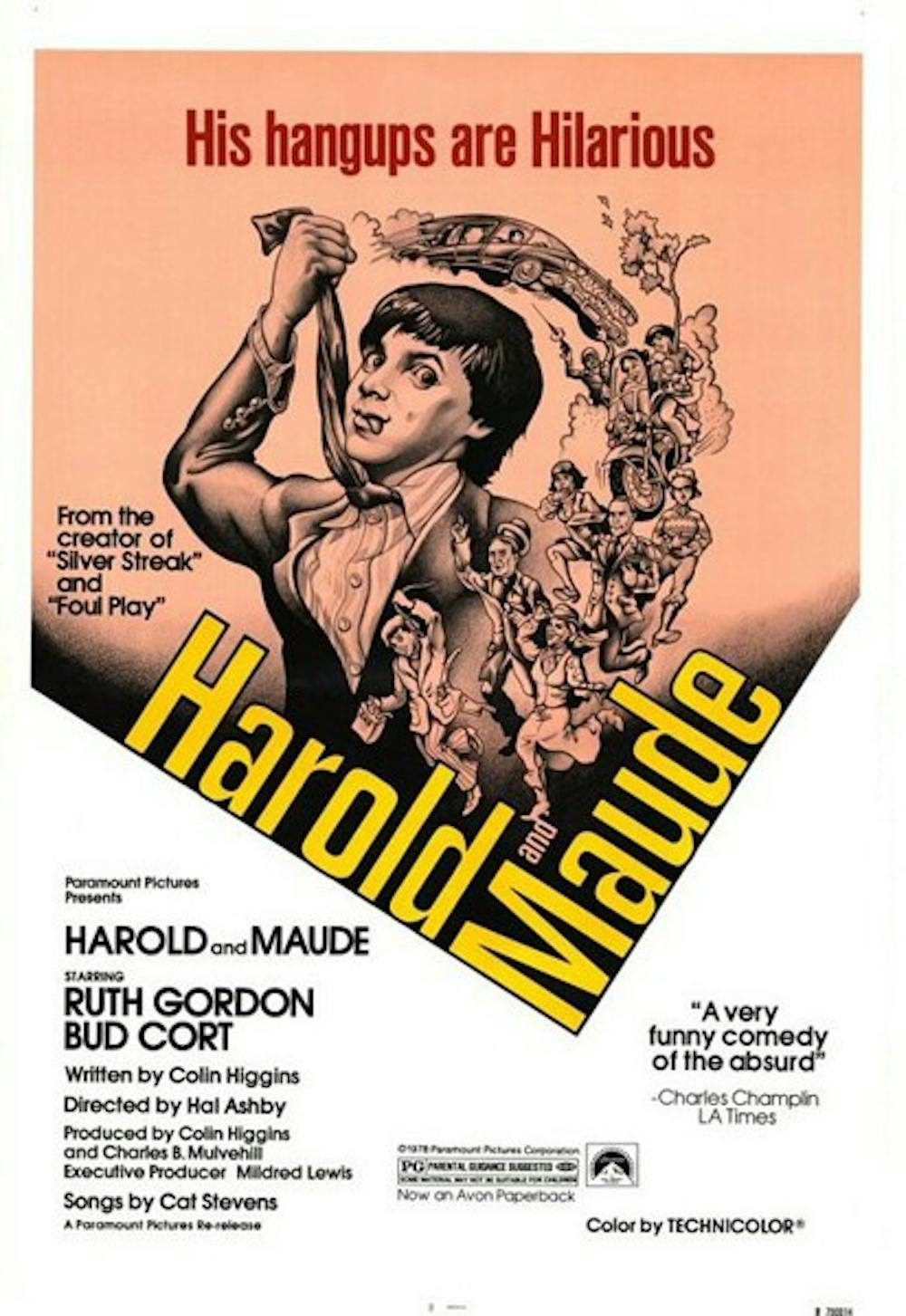Well, here it is: the last cult film blog of the semester. I took a good portion of time looking over the list of cult films this week to choose something that I really thought would be amazing. I considered “Fight Club” (yes, I still haven’t seen it) and “2001: A Space Odyssey,” but when it came down to it, neither of them felt right. Honestly, enough has been written and said about those films already.
Read about ur fav cult here! Or here. You've been following this weekly thing, right?
Then, I stumbled upon “Harold and Maude,” a movie I’d heard about in passing many times. When I saw that the Wikipedia description used the adjective “existentialist” to describe the film, the deal was sealed. “Harold and Maude” it would be.
Paramount Pictures released “Harold and Maude” in 1971. Colin Higgins wrote the screenplay as his master’s thesis, and he hoped to direct the film, but the production company felt he wasn’t prepared for that. Hal Ashby accepted the invitation to direct the film and made Higgins co-producer so that he could also have significant control over the movie.
The film begins with a young man named Harold (Bud Cort) staging his own hanging. We quickly learn from his mother (Vivian Pickles) that this is not the first time Harold has faked suicide. In fact, he has made a habit of it. Through scenes with a psychologist, we learn that Harold is obsessed with death and often attends funerals for fun.
This becomes the main theme of the film: Harold’s desire to “live” in “death,” without any friends or close companions. His staged deaths act as a motif throughout the film, first used to give his mother a fright — shooting himself in the forehead and slitting his wrists and throat in the bathtub. Later, he used this "technique" to ward off potential suitors — setting himself on fire, chopping off his hand and performing seppuku, the Japanese act of slicing open your abdomen. Interestingly enough, these scenes never seem to be in bad taste. I found myself intrigued, and I actually enjoyed the dark comedic aspect of these specific scenes.
Harold eventually falls in love with 79-year-old Maude (Ruth Gordon), a fellow funeral crasher who lived through the Holocaust. She's only concerned with living her life to the fullest. It is through Maude that Harold actually learns to find enjoyment in life. This creates a theme of duality. Harold is young and bent towards death, while Maude is carefree and young at heart; Harold is a rich kid who can have anything he wants, while Maude is a survivor of concentration camps, living in an abandoned train. Following the cliché that opposites attract, Harold and Maude, different in every way possible, fall in love.
“Harold and Maude” treats the touchy subject of age difference in relationships well, too. While it feels odd to see a young man lying in bed with elderly lady, there is something mature about the whole thing — as if their love should be universally accepted by everyone. Of course, it is not, and there is a lovely sequence in which multiple advisors — his uncle, his psychologist and his priest — counsel Harold against his assertion of love for Maude.
Overall, “Harold and Maude” was an odd, but absolutely magnificent portrait of the importance others can have in our lives and the effects that one person can have on the life of another.
Tell the reporter how much you love your grandmother at wruof@asu.edu or follow him on Twitter @willruof
Like The State Press on Facebook and follow @statepress on Twitter.





